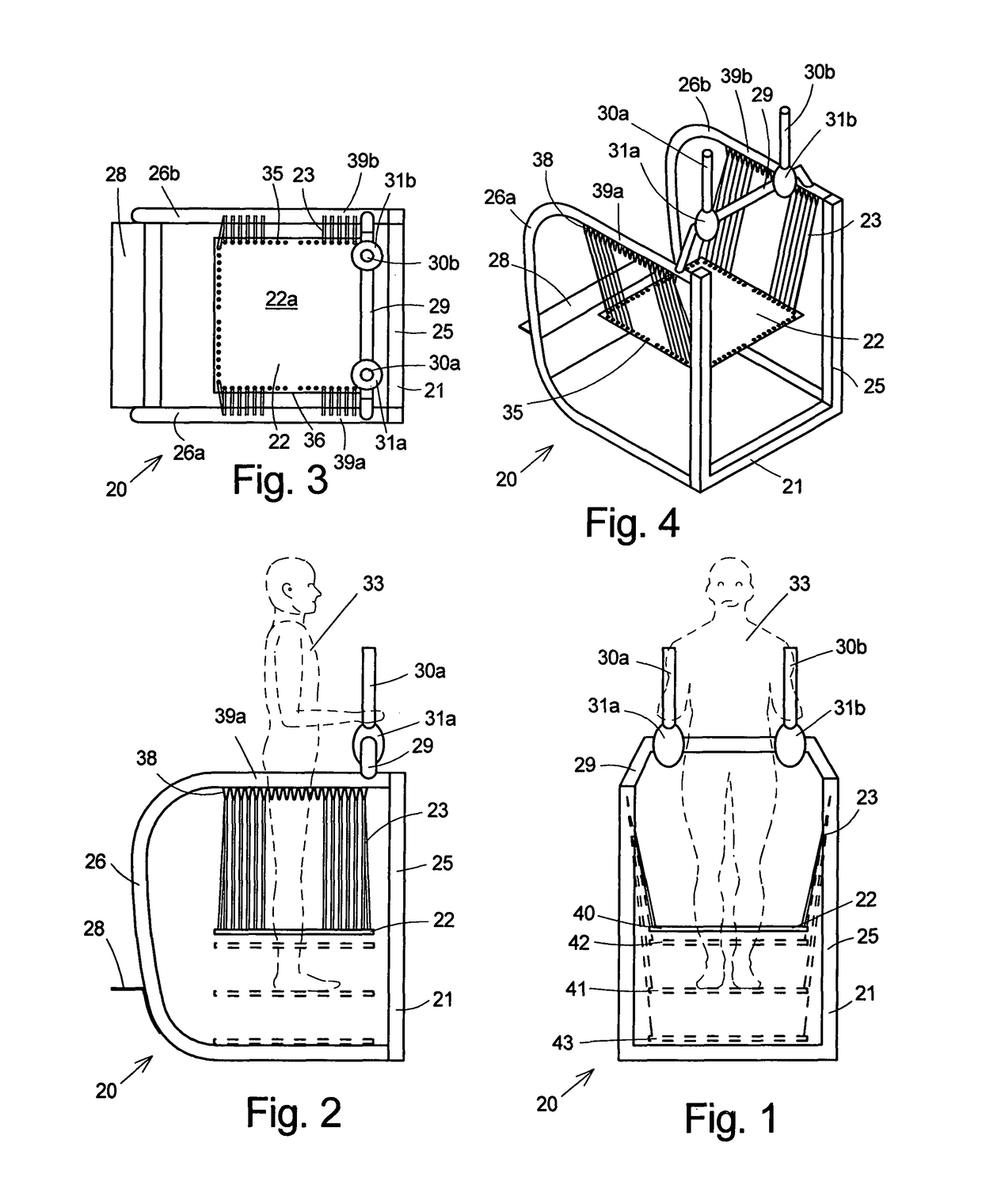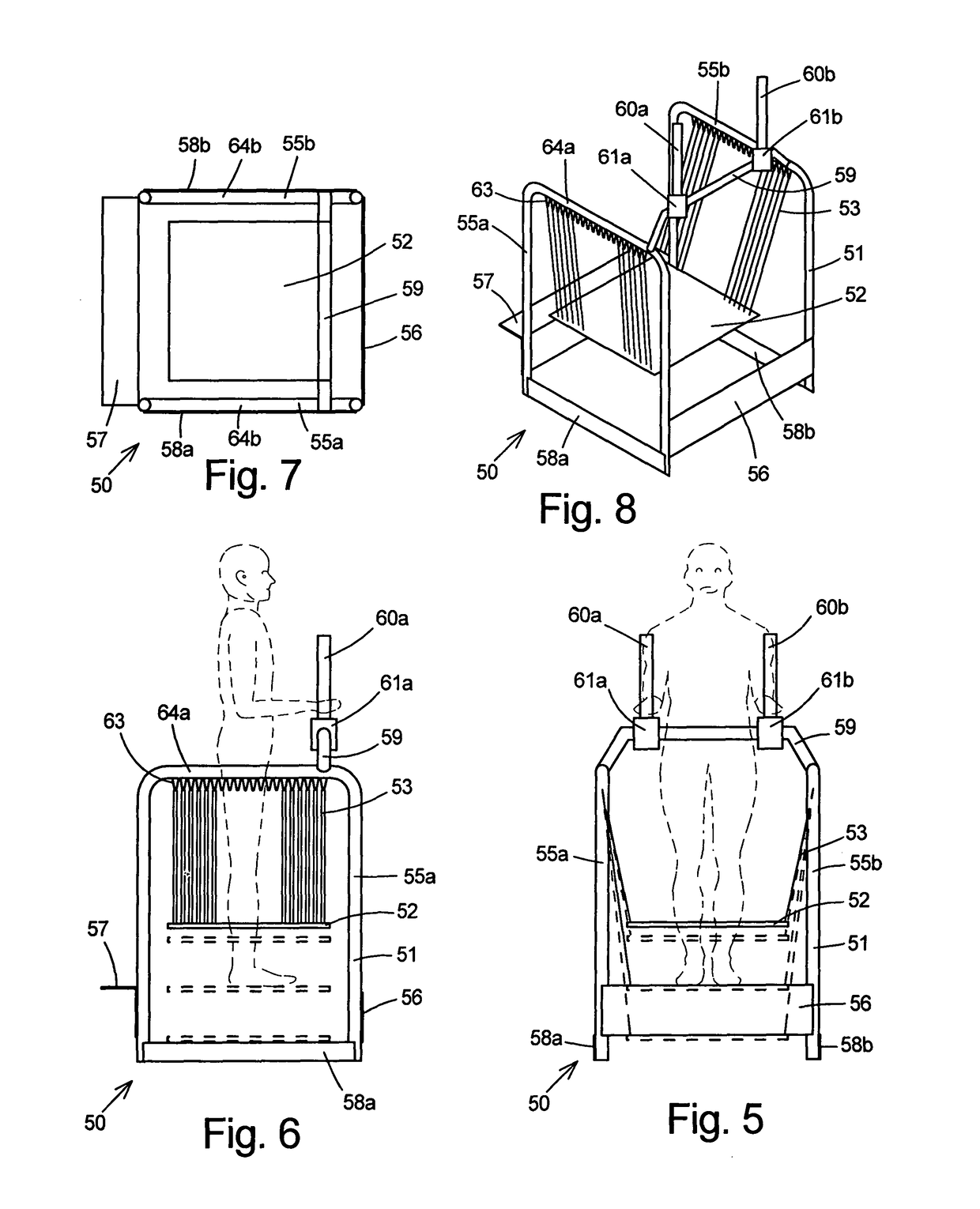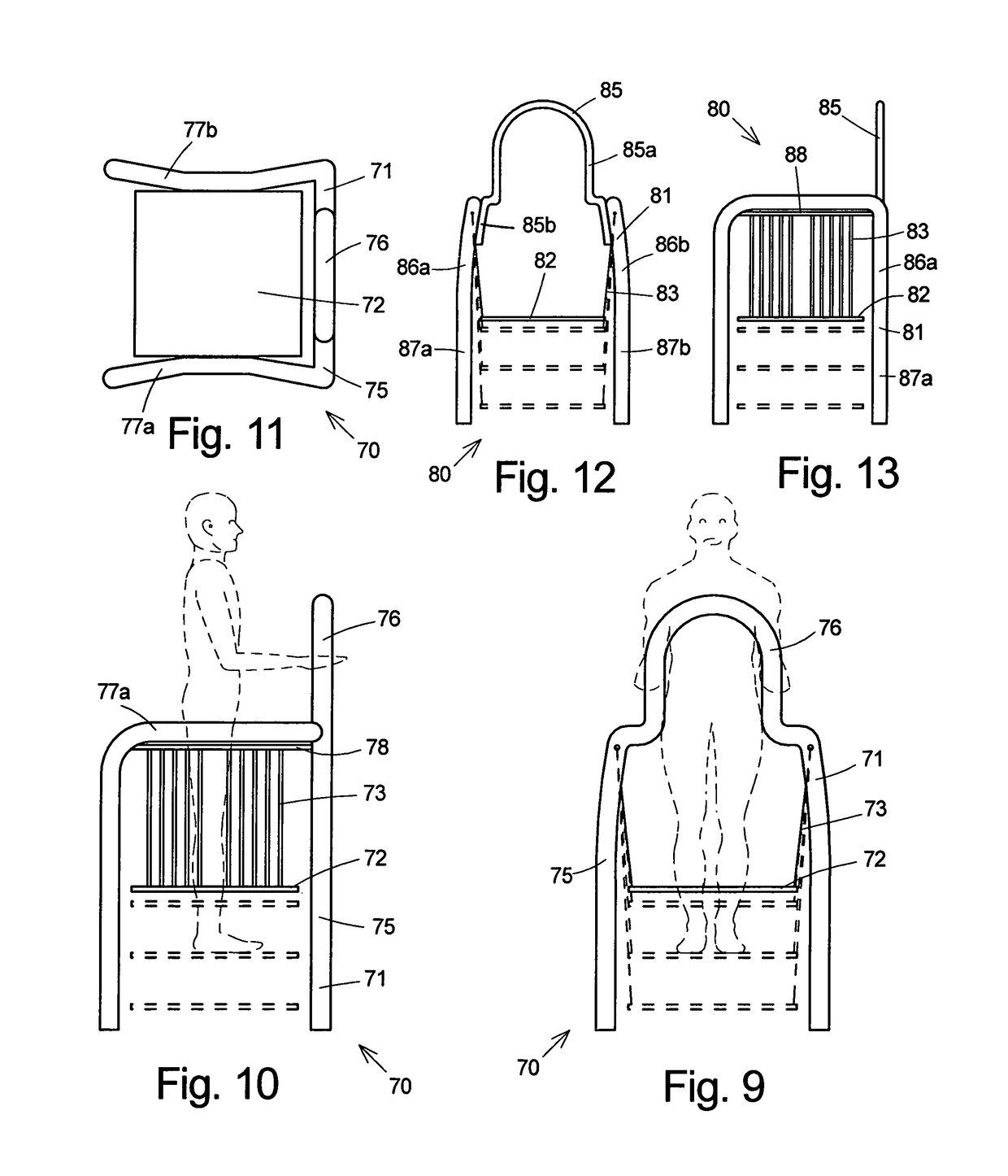Rebound training device
a training device and abounding technology, applied in the field of exercise equipment, can solve the problems of jarring effect on the feet, knees, shins, knees, etc., and achieve the effect of increasing stability
- Summary
- Abstract
- Description
- Claims
- Application Information
AI Technical Summary
Benefits of technology
Problems solved by technology
Method used
Image
Examples
second embodiment
[0053]In FIGS. 4-8, a rebound training device, generally designated 50, is seen to include a frame structure, generally designated 51, a footboard 52, and a plurality of resilient elements, collectively designated 53, suspending the footboard 52 from the frame structure 51. Herein, the frame structure 51 includes a pair of spaced, inverted, U-shaped, tubular side frames 55a and 55b, a front brace plate 56, an L-shaped rear step-brace 57 extending between the side frames 55a and 55b, a pair of lower side brace plates 58a and 58b, and a tubular cross member 59. Attached to the angular cross member 59, which rises above the side frames 55a and 55b, are a pair of upright handlebars 60a and 60b secured to the round cross member 59 by clamps 61a and 61b allowing horizontal adjustment of the spacing between the handlebars 60a and 60b and the vertical angle thereof. Herein, the frame components are formed from 2-inch round tube and brace elements from flat plate. The frame structure 51, exc...
third embodiment
[0055]In FIGS. 9-11, a rebound training device, generally designated 70, is seen to include a frame structure, generally designated 71, a footboard 72, and a plurality of resilient elements, collectively designated 73, suspending the footboard 72 from the frame structure 71. Herein, the frame structure 71 includes an inverted, generally U-shaped, tubular front frame 75 with an upper, grippable, narrow portion 76, and a pair of spaced, inverted, L-shaped, tubular side frames 77a and 77b having their forward ends fixed to the rear surface of the front frame 75. The side frames 77a and 77b converge inwardly along their upper portions to provide gripping areas in the center thereof for the user. Herein, the frame components are formed from 2.5-inch round tube. The frame structure 71, excluding the cross member, handlebars and step, is approximately 36 inches wide, 36 inches long and 68 inches high.
[0056]Similar to the footboard shown in FIG. 3, the footboard 72 has an array of periphera...
fourth embodiment
[0057]In FIGS. 12 and 13, a rebound training device, generally designated 80, is seen to include a frame structure, generally designated 81, a footboard 82, and a plurality of resilient elements, collectively designated 83, suspending the footboard 82 from the frame structure 81. Herein, the frame structure 81 includes an inverted U-shaped, tubular front frame 85, which provides upright gripping sections 85a and lower spaced attaching sections 85b, and a pair of spaced, inverted, U-shaped, tubular side frames 86a and 86b. The front frame 85 extends between the side frames 86a and 86b and is secured on the downwardly extending forward portions 87a and 87b of the side frames 86a and 86b. The resilient elements 83 extend between horizontal hanger bar 88 and the footboard 82. Herein, the side frames 86a and 86b are formed from 3-inch round tube and the front frame 85 is formed from 1.5-inch round tube. The frame structure 81, excluding the cross member, handlebars and step, is approxima...
PUM
 Login to View More
Login to View More Abstract
Description
Claims
Application Information
 Login to View More
Login to View More - R&D
- Intellectual Property
- Life Sciences
- Materials
- Tech Scout
- Unparalleled Data Quality
- Higher Quality Content
- 60% Fewer Hallucinations
Browse by: Latest US Patents, China's latest patents, Technical Efficacy Thesaurus, Application Domain, Technology Topic, Popular Technical Reports.
© 2025 PatSnap. All rights reserved.Legal|Privacy policy|Modern Slavery Act Transparency Statement|Sitemap|About US| Contact US: help@patsnap.com



